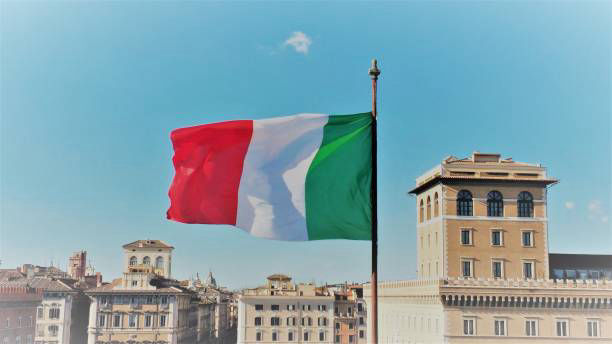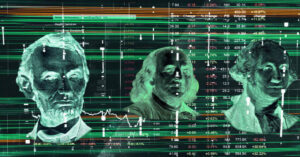The Italian flag, known as Il Tricolore, is one of the most iconic national symbols in the world. Its simple yet striking combination of green, white, and red vertical bands embodies centuries of Italian history, political struggle, and cultural evolution. For Italians, this flag is not just a piece of cloth fluttering in the wind—it represents freedom, national identity, and unity achieved through perseverance. Understanding the Italian flag’s meaning, origin, and evolution provides valuable insight into the spirit of the Italian nation itself.
In this comprehensive guide, we will explore the origins of the Italian flag, the meaning of its colors, its evolution throughout history, its role in Italian culture and society, and how it stands as a symbol of democracy, patriotism, and unity.
Origins of the Italian Flag
The history of the Italian flag dates back to the late 18th century, a time when revolutionary ideas were spreading across Europe. The concept of a tricolor flag was influenced by the French Revolution (1789–1799), which introduced the blue, white, and red flag as a symbol of liberty, equality, and fraternity. The Italian tricolor took inspiration from this revolutionary symbol but incorporated colors that held unique significance for the Italian people.
The first version of the Italian tricolor appeared in 1796 during Napoleon Bonaparte’s campaign in Northern Italy. It was adopted by the Cispadane Republic, a short-lived state formed under Napoleon’s influence in the region of Emilia-Romagna. The Cispadane flag consisted of three horizontal stripes of green, white, and red. Soon after, this design was modified by the Cisalpine Republic, which arranged the colors vertically—the design that remains today.
Thus, what began as a flag of a Napoleonic republic soon evolved into the emblem of Italian unity and identity.
Meaning of the Colors: Green, White, and Red
The Italian flag’s design appears simple, yet its colors carry profound symbolism. Over the centuries, different interpretations have emerged, each reflecting the changing social and political contexts of Italy.
| Color | Symbolic Meaning (Traditional) | Symbolic Meaning (Modern) |
|---|---|---|
| Green | Represents the plains and hills of Italy, and nature’s richness | Symbolizes hope and freedom |
| White | Stands for the snow-capped Alps and purity | Represents faith and honesty |
| Red | Symbolizes the blood of patriots who fought for Italy’s independence | Represents love, courage, and sacrifice |
Initially, some historians suggested that the green color was chosen because of the uniforms worn by the Milanese civic guard, who supported the revolutionary movements. Over time, however, interpretations evolved. Today, Italians view the green as a symbol of hope, the white as a symbol of faith and purity, and the red as a symbol of love and sacrifice for the homeland.
This triple meaning has made the flag not only a national emblem but also a philosophical and emotional representation of the Italian spirit.
Evolution of the Italian Flag Through History
The Italian flag did not always appear in the form it does today. Its design evolved through various political changes, reflecting Italy’s complex journey from fragmented states to a unified nation.
| Period | Political Entity | Flag Design | Notes |
|---|---|---|---|
| 1796 | Cispadane Republic | Horizontal green, white, red stripes | First appearance of Italian tricolor |
| 1797–1799 | Cisalpine Republic | Vertical tricolor, green closest to the hoist | Adopted under Napoleonic rule |
| 1802–1805 | Italian Republic (Napoleonic) | Vertical tricolor with Napoleonic emblem | Early national identity formation |
| 1805–1814 | Kingdom of Italy (Napoleonic) | Tricolor with golden imperial eagle | Symbolized French influence |
| 1848–1861 | Kingdom of Sardinia | Italian tricolor with the Savoy coat of arms | Used during unification wars |
| 1861–1946 | Kingdom of Italy | Same as above; Savoy emblem retained | Official flag of the Kingdom |
| 1946–Present | Italian Republic | Plain green, white, and red vertical bands | Adopted after Italy became a republic |
Each version of the flag reflected a step in Italy’s political evolution—from regional republics to monarchy, and finally to a democratic republic. The final form, adopted on June 19, 1946, after the fall of Fascism and the monarchy, represents a free and united Italy.
The Flag in Italy’s Unification (Risorgimento)
The Italian flag played a crucial role in the Risorgimento, the 19th-century movement for Italian unification. During this period, patriots, writers, and revolutionaries used the tricolor as a rallying symbol for liberty and independence from foreign rule.
Figures like Giuseppe Mazzini, Giuseppe Garibaldi, and Count Camillo di Cavour adopted the tricolor flag as a representation of the Italian cause. During uprisings and revolutionary campaigns, the green, white, and red banner was carried proudly by soldiers and volunteers who fought to unite Italy’s fragmented states.
The flag’s emotional power during this era cannot be overstated—it became a visual embodiment of hope, nationalism, and unity. When the Kingdom of Italy was proclaimed in 1861, the tricolor officially became the national flag, uniting people from Sicily to Lombardy under a single banner.
Design and Proportions
The Italian flag’s design is defined by strict proportions and arrangements established by law. According to the Italian Constitution (Article 12), the flag of the Republic is a tricolor of green, white, and red, in three vertical bands of equal size, with green positioned at the hoist (the side attached to the flagpole).
| Element | Specification |
|---|---|
| Shape | Rectangular |
| Ratio | 2:3 (width to length) |
| Colors | Green (hoist side), White (middle), Red (fly side) |
| Band Width | Equal for all three vertical sections |
| Pantone Approximation | Green: 17-6153, White: Standard, Red: 18-1662 |
The simplicity of its proportions allows the flag to maintain a clean, balanced appearance regardless of size, whether flown on public buildings, schools, or during national ceremonies.
The Italian Flag in National Life
The tricolor flag holds deep emotional and cultural significance for Italians. It is displayed proudly during national holidays, sporting events, political gatherings, and public celebrations. Some of the most important occasions when the flag takes center stage include:
- Festa del Tricolore (Flag Day) – Celebrated on January 7th, commemorating the adoption of the first Italian tricolor in 1797.
- Republic Day (Festa della Repubblica) – Held on June 2nd, marking the birth of the Italian Republic in 1946.
- Liberation Day (April 25th) – Celebrates Italy’s liberation from fascism and Nazi occupation in 1945.
During these celebrations, the Italian flag decorates government buildings, homes, streets, and monuments across the country. The Frecce Tricolori, Italy’s Air Force aerobatic team, performs air shows releasing trails of green, white, and red smoke—a breathtaking symbol of national pride.
Symbolism Beyond Politics
While the Italian flag is a national emblem, its symbolism extends far beyond politics. It represents a unifying force across Italy’s diverse regions, from the mountains of the north to the coasts of the south. Each region has its own dialects, traditions, and cultures, yet the tricolor brings them together as one nation.
The flag also appears in art, design, sports, and culinary representations—such as the Italian pizza margherita, which features basil (green), mozzarella (white), and tomato (red), echoing the flag’s colors. Similarly, the flag’s colors are commonly used in Italian branding, fashion, and architecture to emphasize national identity and craftsmanship.
The Italian Flag During War and Peace
Throughout Italy’s turbulent history, the flag has symbolized both war and peace. During World War I and World War II, soldiers carried the tricolor as a symbol of courage and sacrifice. It flew proudly on the battlefields where Italians fought for independence, sovereignty, and democracy.
After the fall of Fascism and the end of monarchy, the flag regained its original meaning of liberty and unity. Since 1946, it has stood as a symbol of peace, democracy, and the resilience of the Italian people.
The Italian Flag vs. Other Tricolor Flags
Interestingly, the Italian flag resembles several other national flags, particularly those of Mexico and Ireland. However, despite superficial similarities, each has distinct symbolism and proportions.
| Country | Flag Design | Proportion | Primary Symbolism |
|---|---|---|---|
| Italy | Green, White, Red (vertical) | 2:3 | Hope, faith, love |
| Mexico | Green, White, Red (vertical) with national emblem in center | 4:7 | Religion, unity, and independence |
| Ireland | Green, White, Orange (vertical) | 1:2 | Unity between Catholics and Protestants |
| France | Blue, White, Red (vertical) | 2:3 | Liberty, equality, fraternity |
While the Italian flag inspired many later designs, its aesthetic purity and simplicity have made it a timeless model for other nations seeking to express unity and democratic ideals.
Protocol for Displaying the Italian Flag
Like many national flags, the Italian tricolor follows official rules for display and respect. The Presidential Decree of 2000 established guidelines for proper use:
- The flag must always be displayed in good condition and correctly oriented with green at the hoist.
- It should be raised and lowered with dignity, typically at sunrise and sunset.
- When displayed with other national flags, the Italian flag must occupy the position of honor—either to the right or in the center when multiple flags are displayed.
- During mourning, the flag is flown at half-mast.
- On official buildings, it is always flown alongside the European Union flag and the flag of the region or municipality.
These practices ensure that the Italian flag remains a respected and dignified symbol of national unity.
Cultural Representation of the Italian Flag
The tricolor flag appears frequently in Italian cultural expressions—movies, paintings, songs, and literature. Artists often use it to symbolize resilience, revolution, and pride. During major sports events, especially football matches, the Italian flag becomes an emotional symbol of unity. Whether cheering for the Azzurri, Italy’s national soccer team, or celebrating Olympic victories, Italians wave the tricolor as a sign of shared identity and national joy.
In Italian schools, children learn the flag’s history as part of their education, ensuring that future generations understand its value. Many Italians keep the flag displayed at home, especially during national holidays, elections, and major international events.
The Italian Flag in Modern Times
In today’s digital age, the Italian flag continues to symbolize unity in the face of modern challenges. During national crises—such as natural disasters or the COVID-19 pandemic—Italians displayed the flag from balconies and windows as a sign of solidarity and resilience.
Social media platforms often feature the tricolor as a digital expression of patriotism. Hashtags like #Tricolore and #BandieraItaliana trend during national events, reminding people around the world of Italy’s enduring strength and unity.
Conclusion
The Italian flag, with its graceful simplicity and deep symbolism, stands as one of the most meaningful national symbols in the world. Its three vertical stripes—green, white, and red—tell a story of revolution, hope, unity, and enduring pride. From its Napoleonic origins to its modern significance, the flag has evolved alongside Italy itself, reflecting the nation’s journey through monarchy, unification, war, and democracy.
For Italians, the flag is not just a national emblem—it is a shared memory of struggle and triumph. It unites generations and regions under one banner, embodying the values of peace, faith, and courage. Whether fluttering above a government building, painted on a football fan’s face, or draped from a balcony in times of solidarity, the Italian flag continues to inspire and remind Italians of their enduring identity and spirit.
FAQs About the Italian Flag
1. When was the Italian flag officially adopted?
The Italian tricolor in its current form was officially adopted on June 19, 1946, following the birth of the Italian Republic.
2. Why were the colors green, white, and red chosen?
The colors originated from revolutionary symbolism, representing hope (green), faith (white), and love or sacrifice (red).
3. What is the correct ratio of the Italian flag?
The official proportion is 2:3, with three equal vertical stripes—green at the hoist, white in the middle, and red at the fly.
4. Is the Italian flag the same as the Mexican flag?
No, while both have green, white, and red vertical stripes, the Mexican flag includes a national emblem and different shades of color.
5. How do Italians celebrate their flag?
Italy celebrates Festa del Tricolore every January 7th, honoring the first adoption of the Italian tricolor in 1797.









